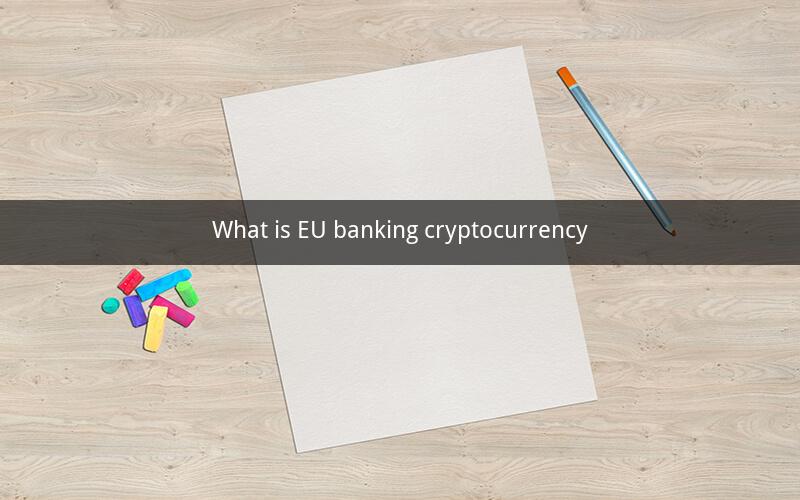
Table of Contents
1. Introduction to EU Banking
2. Understanding Cryptocurrency
3. The Intersection of EU Banking and Cryptocurrency
1. Legal and Regulatory Framework
2. EU Banking and Cryptocurrency Exchanges
3. Security and Compliance Challenges
4. Case Studies: Successful EU Banking Cryptocurrency Partnerships
5. Future Prospects and Challenges
6. Conclusion
---
1. Introduction to EU Banking
The European Union (EU) banking sector is a complex and diverse network of financial institutions that spans across 27 member states. It is characterized by strict regulatory frameworks, high levels of consumer protection, and a strong emphasis on financial stability. The EU banking system is designed to facilitate cross-border transactions, promote economic integration, and ensure the smooth functioning of the single market.
2. Understanding Cryptocurrency
Cryptocurrency is a digital or virtual form of currency that uses cryptography for security. Unlike traditional fiat currencies, cryptocurrencies are not controlled by any central authority and operate on decentralized networks known as blockchain. The most well-known cryptocurrency is Bitcoin, but there are thousands of other digital currencies, each with its own unique features and purposes.
3. The Intersection of EU Banking and Cryptocurrency
3.1 Legal and Regulatory Framework
The EU has been at the forefront of regulating cryptocurrency within its banking sector. In 2018, the EU passed the Fifth Anti-Money Laundering Directive (AMLD5), which introduced new measures to combat money laundering and terrorist financing in the cryptocurrency space. AMLD5 requires virtual currency exchange platforms and wallet providers to comply with strict Know Your Customer (KYC) and Anti-Money Laundering (AML) requirements.
3.2 EU Banking and Cryptocurrency Exchanges
Several EU banks have started to offer services related to cryptocurrency, including custodial solutions, payment processing, and investment opportunities. Cryptocurrency exchanges based in the EU are also subject to strict regulatory oversight, ensuring that they adhere to the same standards as traditional financial institutions.
3.3 Security and Compliance Challenges
One of the main challenges faced by EU banks in the cryptocurrency space is ensuring the security of their clients' assets. Cryptocurrency is inherently more susceptible to hacking and theft than traditional banking systems. Therefore, EU banks must invest heavily in cybersecurity measures to protect their clients' digital assets.
---
4. Case Studies: Successful EU Banking Cryptocurrency Partnerships
4.1 ING and Bitpay
In 2019, ING, one of the largest banks in the Netherlands, partnered with Bitpay, a leading cryptocurrency payment service provider, to offer its corporate clients the ability to pay invoices using Bitcoin. This partnership aimed to provide a secure and efficient way for businesses to manage their cryptocurrency transactions.
4.2 Santander and Binance
Santander, a Spanish multinational banking group, announced a partnership with Binance, the world's largest cryptocurrency exchange, to offer its clients access to digital assets. The partnership includes the development of a new platform that will allow Santander clients to buy, sell, and hold cryptocurrencies.
---
5. Future Prospects and Challenges
The future of EU banking and cryptocurrency is bright, but it also comes with its share of challenges. As the digital currency landscape continues to evolve, EU banks will need to adapt to new technologies and regulatory changes. Key areas of focus include:
- Enhancing cybersecurity measures
- Developing innovative products and services
- Navigating complex regulatory landscapes
---
6. Conclusion
The intersection of EU banking and cryptocurrency is a rapidly evolving field. While there are challenges to be addressed, the potential benefits for both consumers and businesses are significant. As the EU continues to regulate and support the growth of the cryptocurrency sector, it is likely that we will see even more innovative partnerships and services emerge.
---
Questions and Answers
1. Q: What is the main difference between fiat currency and cryptocurrency?
A: The main difference is that fiat currency is issued and controlled by a government, while cryptocurrency operates on decentralized networks and is not controlled by any central authority.
2. Q: How does the EU's AMLD5 impact cryptocurrency exchanges?
A: AMLD5 requires cryptocurrency exchanges to comply with strict KYC and AML requirements, similar to those faced by traditional financial institutions.
3. Q: Can EU banks issue their own cryptocurrency?
A: Yes, some EU banks have started to issue their own digital currencies, known as stablecoins, which are designed to be more stable and secure than traditional cryptocurrencies.
4. Q: What are the main risks associated with holding cryptocurrency?
A: The main risks include price volatility, security vulnerabilities, and regulatory uncertainty.
5. Q: How can EU banks ensure the security of their clients' cryptocurrency assets?
A: EU banks can enhance security through robust cybersecurity measures, regular audits, and compliance with international standards.
6. Q: What role does blockchain technology play in EU banking and cryptocurrency?
A: Blockchain technology provides a secure and transparent ledger for recording transactions, which is crucial for the integrity of the cryptocurrency ecosystem.
7. Q: How does the EU's regulatory framework for cryptocurrency compare to that of other regions?
A: The EU has one of the most comprehensive regulatory frameworks for cryptocurrency, which is designed to protect consumers and prevent financial crimes.
8. Q: Can cryptocurrency be used for international money transfers within the EU?
A: Yes, cryptocurrency can be used for international money transfers within the EU, often offering faster and cheaper options than traditional banking systems.
9. Q: What are the potential environmental impacts of cryptocurrency mining?
A: Cryptocurrency mining can have significant environmental impacts, primarily due to the high energy consumption required to run the mining equipment.
10. Q: How might the rise of cryptocurrency affect the traditional banking sector in the EU?
A: The rise of cryptocurrency could lead to increased competition for traditional banks, prompting them to innovate and offer more digital services.